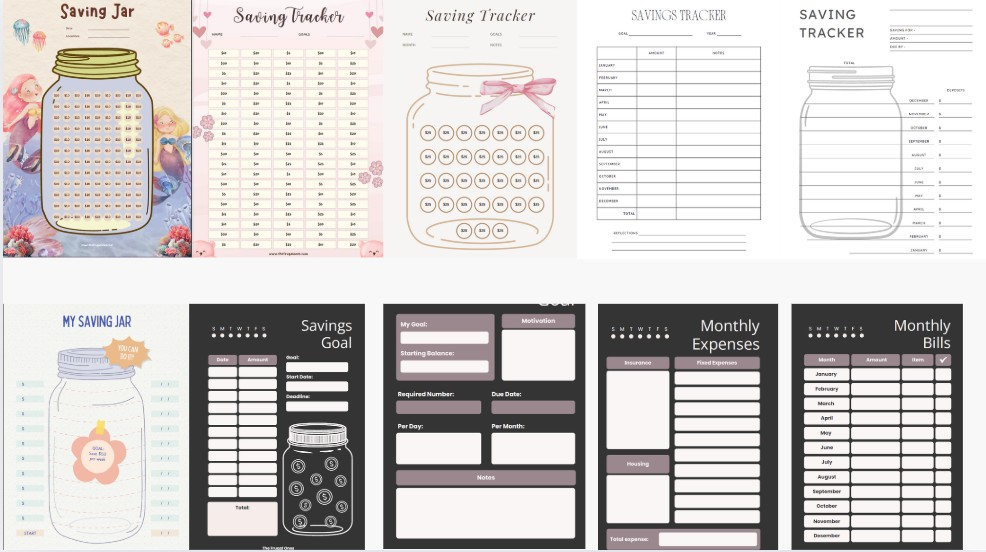There is a money saving strategy everywhere you look. Open an app or check your inbox, and you’ll find someone promising the newest way to save. Skip your daily coffee, buy in bulk, make everything yourself—the list goes on. But not every tip is worth it. Sometimes, trying to save actually ends up costing more. And does it make your life harder?
Choosing the right way to save isn’t just about cutting costs. The best methods match your lifestyle, save money without wearing you out, and help you build the life you want—not just grow your bank account.
Here’s how to pick money-saving tips that actually work, so you can stop guessing and start saving for real.

Key Factors for Evaluating a Money Saving Strategy
Not every money saving method is a slam dunk. Look at these core ideas before adding a new habit or hack to your wallet:
1. Actual savings vs extra costs
- Are you really cutting costs, or just shifting expenses somewhere else?
- Watch for hidden tradeoffs: extra fees, increased wear-and-tear, or costly mistakes.
2. Time, effort, and stress
- Does this strategy fit your daily life? Or does it leave you irritated or rushed?
- Even if it saves cash, a strategy that sparks burnout isn’t a long-term win.
3. Sustainability
- Can you keep this up for months or years?
- The best money habits feel doable most days, not like a grind you can’t wait to quit.
4. Joy and personal satisfaction
- Saving money should leave you feeling good about your choices, not like you’re punishing yourself.
- If a strategy makes you miserable or keeps you from enjoying life, it’s not the best fit.
These aren’t just gut checks—they’re the things that set apart smart, lasting choices from quick fixes.

The Math Check
Numbers don’t lie, so start with simple math.
For example, my friend’s take a twice-a-year trip to the Amish store. Yes, it’s a two-hour round trip. Yes, they’ve been asked if it’s worth it.
So, we did the math. We made a price chart comparing what they spend at their regular grocery store versus buying in bulk at the Amish shop. Turns out, they saved hundreds of dollars each year by making those two trips.
The math said yes—it’s a savvy choice.
But sometimes, savings hide in small numbers. Maybe you’re only saving $10 a month. Feels minor, until you realize that’s $120 a year, which can cover a bill or add up in your account. Multiply the monthly savings by twelve for a yearly view. Suddenly, those small wins look much bigger.
Key tip:
- Always write down the real numbers. Don’t guess.
- Compare against what you’d actually spend elsewhere.
- Check both the short-term and long-term amounts.
Small, steady savings add up. So do missed chances to save.
The Time Tradeoff
Your time is just as important as your cash—maybe more.
Before you grab onto a new saving tip, pause. Add up the total time it takes from your week or month. That Amish store run? An hour to get there, 45 minutes to shop, and an hour home. But they only do it twice yearly, and the cost savings are solid. So, they’re happy with the deal.
It’s not just about time spent, though. Your situation shapes the math. They drive a Prius and get 50 miles per gallon, so fuel barely dents their savings. If they drove a gas-hungry truck, they’d rethink the trip.
Ask yourself:
- Does this saving strategy gobble up hours?
- Could the same time be used for something better?
- Does it add stress, or slip right into your day?
Consider the total cost: money saved, gas burned, and hours spent. If the math doesn’t work, pass on the idea.
The Inconvenience Factor
Savings might look great on paper but feel impossible in practice if they mess up your routine.
Let’s face it: some penny-pinching tactics are a real hassle. Maybe you’ve tried a new meal prep system that leaves you with dishes in every corner, or a DIY project that takes over your weekends.
Every money saver should ask:
- Does this mess up my schedule?
- Am I always annoyed or frustrated when I do this?
- Is the process harder than it needs to be?
Not every inconvenience is a dealbreaker, though. Sometimes you just need a tweak. Batch tasks together, swap steps, or change your mindset. What feels awkward the first time can turn into a smooth habit with a little practice—or after you adjust your expectations.
But if the hassle always outweighs the reward, let it go. No shame.
The Sustainability Factor
Can you keep this going week after week, year after year?
If saving cash turns into a chore you dread, the habit won’t stick. Take our friend’s example: when their four sons lived at home, they made the Amish store trip four times a year. Now that it’s just two of them, twice is plenty and fits their life far better.
You don’t have to choose all or nothing. Tweak your approach. Change the schedule. Make it work for your family today, not last year or ten years ago.
Long-term savings win, but only if you keep going.
The Joy Factor
The best savings don’t just help your wallet—they brighten your life.
Our friend’s Amish store trips are a highlight, not a chore. They look forward to the peaceful drive, waving at familiar faces, and the cinnamon rolls on the way home. The savings are real, but the tradition is the true reward.
If a savings habit only brings stress, frustration, or resentment, consider if it’s worth continuing. It’s fine to drop a saving method that takes away more than it gives.
Ask yourself:
- Does this habit make you happy, or at least satisfied?
- Do the results boost your mood or energy?
- Can you see yourself enjoying it for years to come?
Frugality isn’t about giving things up just to “win” at saving money. It’s about building a life that works for you.

The Five-Part Frugal Filter
When you’re looking at your next money saving strategy, use this simple review:
- Does the math work out?
- Is the time investment reasonable?
- Will this drive me nuts?
- Can I keep this up over time?
- Does it fit the life I really want?
If you answer yes to most of these, you’ve found a solid savings move. If not, skip it—no guilt needed. True frugality means being smart with your resources, not just saving for the sake of saving.
Your Turn!
What’s the weirdest saving habit you’ve stuck with? Have you ever tried something everyone swears by, only to drop it after a month? How did you know it wasn’t worth it, or that it was a keeper?
Share your story in the comments. Let’s crowdsource the best (and worst) money saving strategies and help each other choose smarter.
Final Thoughts
You don’t need to try every money-saving idea you find. The best ones fit your lifestyle, match your budget, and improve your life—not just save money.
Look closely at each tip before you jump in. Do the math. Check your schedule. Trust how you feel. Real savings aren’t about giving things up—they’re about making smart choices so your money and your life both feel better.
Want to build money habits that actually work? Focus on what matters most, and create a way that suits you for smarter, happier living.















